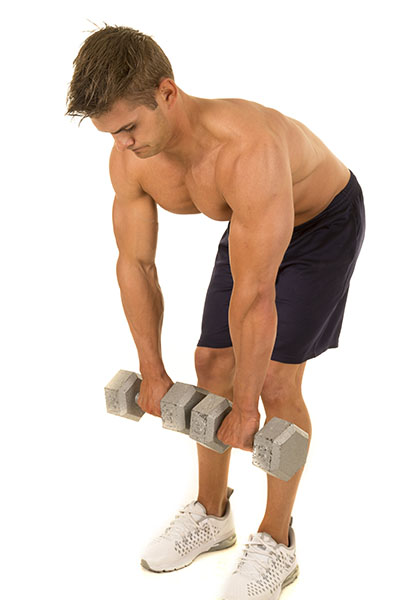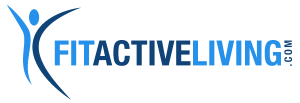Contents
Chances are you’ve heard the term RDL thrown around a few times, kind of like Good Mornings (yes, the exercise.) For those who haven’t, RDL stands for “Romanian deadlift.” While Romanian deadlifts have similarities to a conventional deadlift, ultimately they differ in the muscle groups they focus on. According to Stephany Bolivar, personal trainer at ICE NYC, during RDLs your hips don’t go as far down which loads the hamstrings more.
Despite the name, Romanian deadlifts are for everybody. In fact, dumbbell RDLs (D-RDLs)are a great way to test your balance and increase strength throughout the body. You may notice muscle imbalances you didn’t even know you had!
Dumbbell RDL Purpose
Similar to a conventional deadlift, the dumbbell RDL will strengthen the posterior chain muscles which includes your hamstrings, glutes and lower back. Having a strong posterior chain will help prevent injuries. In addition, a strong posterior chain helps strengthen the muscles needed to do more compound movements. If you’re a runner, D-RDLs will help create a better balance between the quads and hamstrings which will improve your running.
How To Do a Dumbbell RDL
To do a D-RDL, you’ll start in a shoulder-width stance with a pair of dumbbells in front of your thighs. Keep a micro-bend in your knees and focus on pushing your butt back as far as possible. Once the dumbbells reach your knees, do not bend the knees any further. Keep pushing the butt back until the dumbbells reach the mid-shin.
Keep in mind that you might not be able to go down as low as you can in a conventional deadlift. Your hips should stay high, which will cause the tension to increase in the hamstrings and glutes. So, if you feel a lot of tension in your bum then you’re doing it right!
You should pinch your shoulders together and your chest should remain high so that you have a flat back during the movement. Once you’ve reached your lowest point, push through the heels and stand – squeezing the glutes all the way to the top. Then repeat for your desired reps.
Muscles Targeted

The dumbbell RDL primarily works your hamstrings, glutes and lower back. It truly is a lower body killer that you’ll be feeling the next day – maybe even two. Dumbbell Romanian deadlifts work the four muscles in the back of your leg that make up the hamstring: the biceps femoris (two muscle groups), semitendinosus and the semimembranosus. When performing a D-RDL, you should feel a deep stretch throughout these muscles. Keep in mind, there is a difference between a deep stretch and pain. If at any moment you feel something painful, then change the exercise to make it more comfortable.
You target the gluteal muscles when doing a dumbbell RDL. These muscles are the gluteus maximus, medius and minimus. D-RDLs work the entire muscle group, but they specifically target the larger of the three muscles – the gluteus maximus. Besides the gluteal muscles, D-RDLs target the erector spinae muscles. The erector spinae is made up of three muscles known as the spinalis, longissimus and iliocostalis. These muscles support the spine and provide flexibility when bending in multiple directions.
Besides working the hamstring, glutes and lower back, D- RDLs activate other muscle groups that are being used to control the movement. Your core muscles, traps, forearms, middle back and obliques will all be engaged while doing a dumbbell RDL.
Dumbbell RDL Benefits
Dumbbell RDLs create several benefits. One of those being an increase in glute and hamstring muscle mass. AKA — doing D-RDLs will help you grow the bum (the right way). While increasing your lower body strength, you’ll also learn proper form, like how to hinge your hips. One of the greatest benefits that accompanies doing dumbbell RDLs is an improvement in your athletic performance. When you do things like walking, running, or jumping – these all require athletic ability.
Dumbbell RDL Mistakes

When performing an exercise, the most important thing you can do is make sure it’s done right. Proper form when doing dumbbell RDLs will help prevent injury and ensure that you engage the targeted muscle groups. Here are a few common D- RDL mistakes:
Rounding the Back
The most common mistake when doing a dumbbell RDL is rounding the back. Whenever you do any type of athletic movement, it’s important to stabilize the body. Before doing a Romanian deadlift, be sure to hinge at the waist, pinch your shoulder blades together to keep the back straight and engage the abs. This will help reduce the risk of injury.
Locking the Knees
Another common mistake that is made when doing dumbbell RDLs is locking out the knees. This might seem a little confusing because you also don’t want to bend the knees “too much.” However, locking out the knees can cause the weights to swing far out in front of you and cause unnecessary strain to the lower back. To combat this, focus on having a slight bend in your knees and keep the dumbbells close to your body.
Looking Up
Neck injuries are definitely something you want to avoid. One common mistake made by many lifters is keeping their gaze up as they hinge forward at the waist. Not only will this cause you to put a strain on the neck, it also compels you to arch the low back. Be sure to allow your gaze to drift to the floor when doing a dumbbell RDL.
Dumbbell RDL Variations

Believe it or not, you can do dumbbell RDLs in different variations. Single leg RDLs and Banded D-RDLs are my go-to moves for lower body workout days. Throw in some sets of dumbbell sumo deadlifts and it will be one of the best leg days you have ever had!
Single Leg RDL
A single leg RDL is like a dumbbell RDL, it’s just the unilateral version. During a single-leg RDL you will stand on one leg, hold the weights in one or both hands, and bend your hips back while maintaining a long spine. The elevated leg should remain straight as you lower down, the chest facing toward the ground and your body in a straight line. Then drive the hips forward and return to a standing position, while focusing on contracting the glutes of your standing leg.
Banded Dumbbell RDL
If you really want to spice things up, then try out banded dumbbell RDLs. This will require the use of a resistance band around any sturdy anchor that is about hip height. Once you have the resistance band secured around your waist, perform a regular dumbbell RDL and you should feel a nice stretch through the glutes, hamstrings and low back due to the added resistance.
